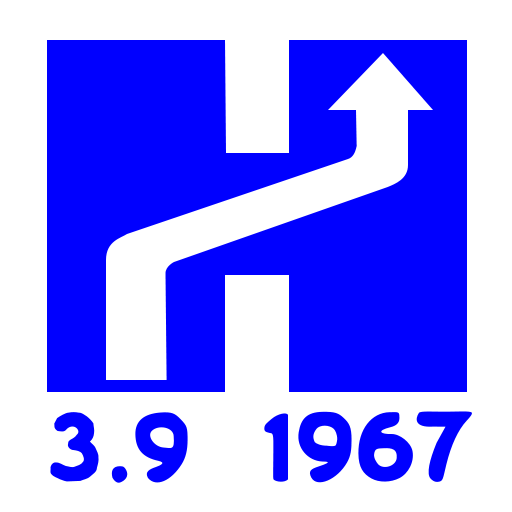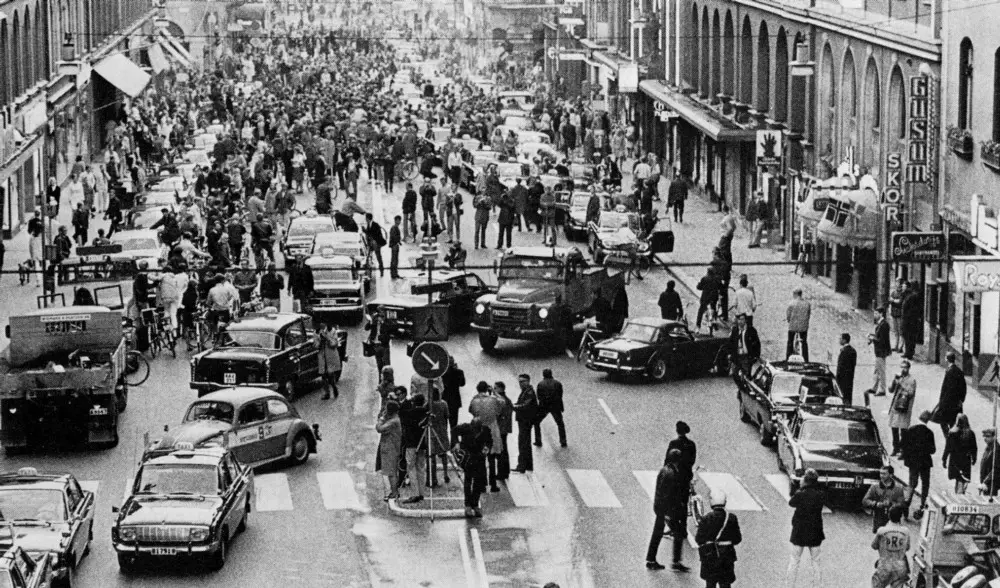 eptember 3, 1967. In Sweden, this date is remembered as “Dagen H” (“H Day”). On that day, the traffic switched from driving on the left-hand side of the road to the right. The “H” stands for “Högertrafik”, which means “right traffic”. The change was extremely unpopular, but it was necessary. In Finland and in Norway — the countries Sweden shares its borders with — motorists were already driving on the right-hand side of the road. Moreover, roughly ninety percent of the Swedish drove left-hand drive cars, which are more appropriate for right-side driving.
eptember 3, 1967. In Sweden, this date is remembered as “Dagen H” (“H Day”). On that day, the traffic switched from driving on the left-hand side of the road to the right. The “H” stands for “Högertrafik”, which means “right traffic”. The change was extremely unpopular, but it was necessary. In Finland and in Norway — the countries Sweden shares its borders with — motorists were already driving on the right-hand side of the road. Moreover, roughly ninety percent of the Swedish drove left-hand drive cars, which are more appropriate for right-side driving.
An unpopular decision
In 1955 the Swedish had been questioned about the issue with a referendum. Eighty-three percent of the voters declared their preference for left-hand driving. Nevertheless, in 1963 the Riksdag — the Swedish Parliament — approved Prime Minister Tase Erlander’s proposal of right side traffic beginning in 1967. The reason why the Government and the Parliament decided to overcome the choice of the people eight years after the referendum is that the number of cars on the road had tripled from 500,000 to 1,5 million. The situation was clearly becoming a chaotic one.
The “Dagen H”
On September 3, 1967, nearly all the traffic was blocked on all roads from one o’clock to six o’clock in the morning. The only motorists who were allowed to keep driving were those who were on the roads for working reasons. Anyway, they had to follow some special rules: they were ordered to stop at ten to five, to carefully change side of the road, and then to stop again. Officially, the switch took place at five o’clock, when the circulation was resumed.
In Stockholm and Malmö — the largest cities in Sweden — the block of the traffic lasted even longer: from ten o’clock in the morning of September the 2nd to three o’clock in the afternoon of September the 3rd. Twenty-nine hours. The reason for such a long block is that workers had to change all the road signs.

The public transport
The most complex part of the “Dagen H” was the one that concerned public transport. Stockholm, Helsingborg, and Malmö trams were replaced by buses with doors opening to the right side. The Swedish Government bought more than a thousand of them. Approximately eight thousand outdated buses were modified to have doors on the right as well as on the left. Some other buses, then, were sold to Pakistan and Kenya, whose traffic was still driving on the left-side of the road.
Conclusion
The “Dagen H” was by far the largest logistical event in Sweden’s history. From a road-safety point of view, the switch was a success. On September 3, only 157 minor accidents occurred, of which only thirty-two caused some injuries. It is remembered as a success because both the Government and the press had forecasted many more crashes.

The most impressive thing about these events is its photos. We can see a hugely chaotic traffic in Stockholm, road signs hidden with black bags, and motorists driving as if they were in the wrong direction.

History, Politics & Economics – A place for uncomfortable truths.
michelecaimmi98[at]hotmail.com





